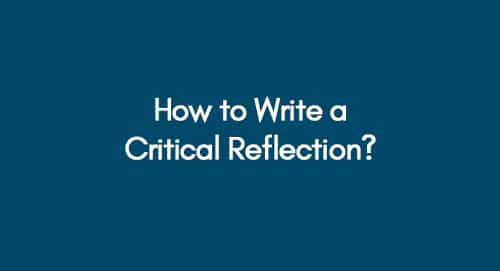
The Sources and Impacts of Academic Stress in Indian Adolescents: A Quantitative Study
September 29, 2022
How to Write a Critical Reflection? Definition and Explanation
October 1, 2022The style of narration refers to the way in which a story or narrative is presented to the audience or reader. It encompasses the techniques, perspectives, and choices made by the author or narrator to convey the story's events, characters, and themes.
Learn More About Dissertation Topics Here
Explore Current Dissertation Examples Here
You can write in various styles of narration, and the third person is among those that are often acquired. This guide will teach you how to write in the third person with examples to improve your writing skills. Whether you're a student, professional, or blogger, understanding the basics of third-person writing can help make your work clearer and more concise. By following the measures in this guide, you'll be able to start using the third person in your writing today!
What are the Different Styles of Narrations?
There are several different styles of narration, including:
1- First-Person Narration
This style involves the use of "I" or "we" by a narrator who is a character in the story. The narrative is presented from this character's perspective, providing their thoughts, feelings, and observations. It offers a subjective and personal account of events, intimately connecting readers with the narrator's experiences.
2- Third-Person Limited Narration
In this style, the narrator is an external entity that focuses on the thoughts and experiences of a single character. The narrative is presented using pronouns like "he," "she," or "they," and readers gain insights into the chosen character's thoughts and emotions. However, the perspective is limited to that character's point of view.
3- Third-Person Omniscient Narration
This style involves a narrator who knows and presents the thoughts and feelings of multiple characters. The narrative voice is not tied to a single character's perspective and can provide insights into various characters' minds. This style offers a broader view of the story, allowing readers to understand different characters' motivations and actions.
4- Second-Person Narration
This style addresses the reader directly, using the pronoun "you." It creates a sense of immediacy and involvement as if the reader is an active participant in the events of the story. While less commonly used than other styles, it can create a unique and engaging narrative experience.
5- Epistolary Narration
This style involves presenting the story through a series of letters, diary entries, or other written documents. It offers a fragmented perspective, as the narrative is composed of various characters' writings. It can create a sense of authenticity and intimacy as readers gain access to the characters' personal thoughts and correspondence.
Explore Our Amazing Assignment Writing Services
Learn More About Our Expert Writing Services
Each of these styles of writing has its unique strengths and purposes. By understanding the different narratives used in writing, authors can better choose the right tool for their purpose. This effectively helps an author learn practical steps to write from a third-person perspective.
What is a Third-Person Point of View in Writing?
Learning the basics of the third-person perspective is important before learning how to write in the third person. The third-person's point of view is when the writer uses third-person pronouns like "he," "she," and "it." This perspective describes events or characters without directly involving the reader. You can opt for a limited or omniscient approach depending on your genre and story.
The third-person perspective in writing is often used in fiction to create a more objective perspective. However, it can also be used in nonfiction writing, such as biography or history, to give a complete picture of events. The third person's point of view effectively engages readers by creating a more objective perspective.
Types of Third-Person Points of View
Third-Person Omniscient Point of View
The third-person's omniscient point of view is a type of third-person writing that allows the author to tell the story from the perspective of multiple characters. That can be done by alternating between different characters' points of view or by giving the reader access to all characters' thoughts and feelings.
A third-person omniscient point of view can help create suspense or reveal information that would otherwise be hidden from the reader. However, it can also be challenging to keep track of all the different characters' thoughts and feelings, and authors must be careful not to overuse specific scenarios. When used sparingly, the third person's omniscient point of view can be a powerful tool for telling an engaging story.
Third-Person Limited Point of View
In the third person limited point of view, the narrator tells the story from the narrow perspective of a single character. The reader is privy to that character's perception and feelings, but no one else. This point of view is often used in novels and short stories, as it allows readers to feel closely connected to the protagonist.
However, a limited third-person point of view can also be used in nonfiction writing, such as biography or memoir. The author often adopts the subject's persona in these cases, providing an intimate look at their life and thoughts. Regardless of genre, the third person's limited point of view offers a unique perspective on the story being told.
Top Tips for Captivating Writing 3rd Person Narrative Style
Here are the best tips on how to write in the third person:
1. Use Strong Verbs
When writing in the third person point of view, it is crucial to use strong verbs that captivate the reader and move the story forward. Strong verbs convey emotion and action and can help to bring your characters and their world to life. Weak verbs, such as “is,” “are,” and “has,” will make your writing sound dull and uninteresting. Instead, try using more exciting verbs to capture the reader’s attention.
3. Avoid Personal Pronouns
When writing in the third person point of view, it is essential to avoid using personal pronouns such as “I,” “me,” “we,” or “us.” That can be tricky at first, but it will help create a more objective perspective and prevent the reader from becoming overly connected to any single character.
2. Be Specific
When describing your characters, settings, and events, it is essential to be as straightforward as possible. The more concrete and detailed your writing is, the easier it will be for readers to visualize what is happening in the story.
3. Use Active Voice
Your writing appears more dynamic and intriguing when you employ an active voice. By making the sentence’s subject the actor rather than the recipient of the action. For example, “Sheila hit the ball” is written in active voice, while “Sheila hit the ball” is written in passive voice.
4. Avoid Using Too Much Dialogue
While dialogue can be a great way to move the story forward and provide insight into your characters, too much dialogue can make your writing feel stilted and unnatural. Use dialogue sparingly and only when it somehow furthers the plot or develops the characters.
5. Show, Don’t Tell
Rather than simply telling readers what is happening in the story, try to show them through your writing. It can be done using vivid descriptions, sensory details, and strong verbs. Showing rather than telling can make your essay more captivating when done well.
6. Use Interesting Words
Avoid using dull or overused words in your writing. Instead, try to find more interesting words that accurately convey what you want to say. A thesaurus can be a helpful tool for finding alternative words for common ones. Just be sure not to use words that are so obscure that they will confuse your readers.
7. Varying Sentence Length
If all your sentences are of the same length, your writing will likely become monotonous and challenging to read. To keep things interesting, vary the lengths of your sentences so that they range from short and punchy to long and descriptive.
8. Use Figurative Language
Figurative languages, such as metaphors and similes, can add interest and depth to your writing. When used sparingly, these devices can help paint a picture in the reader’s mind and make them feel more connected to your story. However, overuse of figurative language can make your writing feel contrived or clichéd, so use it judiciously.
9. Use Sensory Details
Sensory details are another great way to engage the reader and make the story more interesting. These details appeal to one or more of the five senses: sight, sound, smell, taste, and touch. Including these details in your description will help bring the scene to life for the reader.
Review the following:
- How to write an academic essay: Tips and Examples
- How to write a discussion in a report
- How to write a conclusion for an academic paper
Need help with your assessment?
Premier Dissertations is here to assist if you seek help in paraphrasing. We have a team of experienced and talented writers who can cater to your work associated with paraphrasing with zero plagiarism. Contact us today by simply dropping us a message on Whatsapp or by Email, and we will get back to you within 24 hours.
Get 3+ Free Dissertation Topics within 24 hours?



























